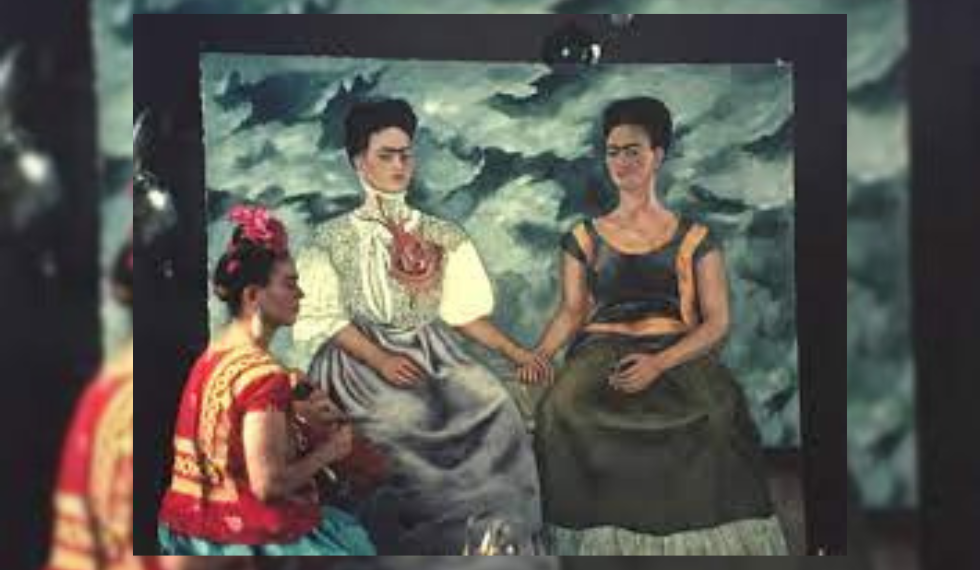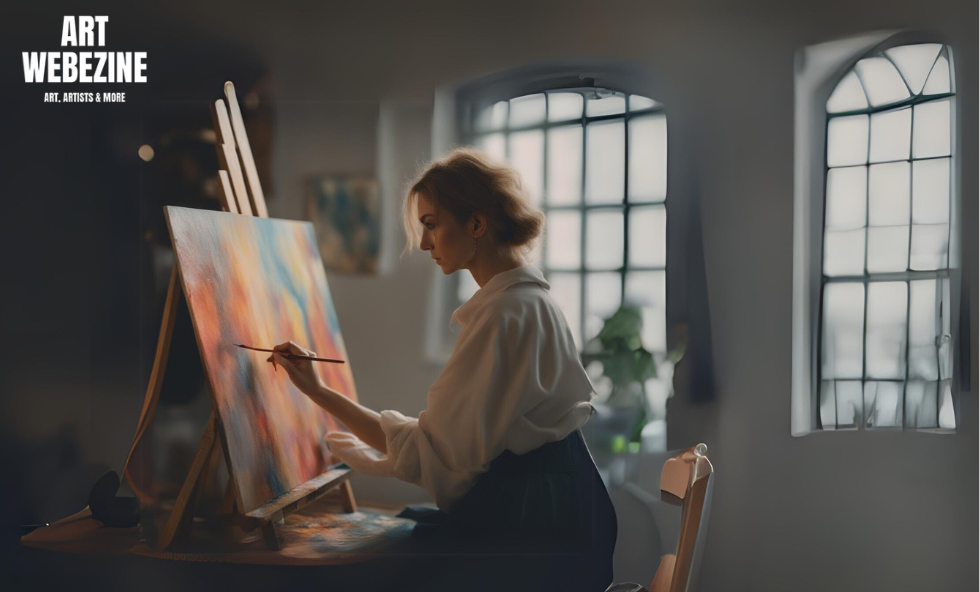In the vast realm of art, women painters have long been overshadowed and underrepresented, but their immense talent and revolutionary contributions can no longer be denied. Breaking barriers and defying societal norms, these fearless women have challenged the status quo, paving the way for future generations of artists. From the Renaissance period to the present day, women painters have defied expectations, shattered glass ceilings, and left an indelible mark on the art world. Through their brushstrokes, they have not only told stories and conveyed emotions but also challenged the very fabric of a male-dominated industry.
Revolutionary Women Painters Who Defied Conventions and Made History

Beyond their individual accomplishments, these revolutionary women painters collectively contributed to a broader movement for gender equality and social change within the art world. Their work not only challenged artistic conventions but also questioned societal norms and biases that hindered the recognition and representation of women artists.
Georgia O’Keeffe’s sensual and enigmatic flower paintings, for instance, were often misinterpreted by male critics who reduced them to mere representations of female anatomy. Despite this, O’Keeffe persisted in expressing her artistic vision, refusing to be confined by gendered interpretations of her work.
Frida Kahlo’s art was deeply rooted in her personal experiences, including her physical and emotional pain, her relationships, and her Mexican heritage. Her unapologetic portrayal of her identity and struggles confronted the prevailing expectations of women’s role in art, earning her international acclaim and a lasting legacy as a feminist icon.
Louise Bourgeois’ exploration of female sexuality and emotional complexity challenged the male-dominated art scene, urging viewers to confront uncomfortable truths about human nature and vulnerability. Her sculptures, such as “Maman,” a giant spider, became iconic symbols of feminine strength and resilience.
The Guerrilla Girls, who emerged in the 1980s, used humor and anonymity to highlight the underrepresentation of women and artists of color in museums and galleries. Their thought-provoking campaigns exposed the systemic biases and called for institutional change within the art world.
The impact of these revolutionary women painters extended beyond their own artistic contributions. Their courage and determination to challenge norms opened doors for future generations of female artists and paved the way for more inclusive art spaces. Today, their influence can be seen in the rising prominence of women artists, diverse representations in museums, and ongoing efforts to dismantle systemic gender and racial biases in the arts.
The Challenges Faced by Women Painters and How They Overcame them with Tenacity and Talent
- Gender Inequality: Women painters faced pervasive gender inequality throughout history. They were often relegated to secondary roles and deemed unfit for serious artistic pursuits. Their access to resources, education, and opportunities was severely limited compared to their male counterparts.
- Societal Expectations: Society imposed strict expectations on women, defining their roles primarily as wives, mothers, and homemakers. These expectations hindered women painters from dedicating themselves fully to their art. They were often expected to prioritize domestic responsibilities over their artistic aspirations.
- Discrimination in the Art Industry: The art industry was dominated by men, and women painters faced discrimination and exclusion. They struggled to gain recognition and acceptance within established art institutions, galleries, and exhibitions. The male-centric art world often dismissed their work as inferior or unworthy of serious consideration.
However, women painters overcome these challenges through their tenacity and talent:
- Pushing Boundaries: woman painters defied societal expectations and pushed the boundaries of traditional subject matter. They courageously explored themes considered bold, unconventional, or controversial, challenging the status quo and expanding the horizons of artistic expression.
- Creating Their Own Opportunities: Faced with limited opportunities for formal art education and exhibition, women painters established their own networks, salons, and galleries. They formed supportive communities and organized independent exhibitions to showcase their work, carving out spaces for themselves in the art world.
- Unwavering Determination: Despite the hurdles they faced, women painters displayed unwavering determination and resilience. They persevered through rejection, criticism, and societal pressure, refusing to be silenced or diminished. Their dedication to their craft and their refusal to be defined by societal norms opened doors for future generations of women artists.
The challenges faced by women painters were immense, but their tenacity, talent, and refusal to be confined by societal expectations allowed them to overcome these obstacles. Their contributions continue to inspire and empower women artists today, reminding them of the importance of pushing boundaries and striving for equality in the art world.
Exploring the Themes and Styles Explored by Women Painters Throughout History

As we delve into the artistic legacy of women painters throughout history, we discover a rich tapestry of themes and styles that have shaped the art world. These trailblazing female artists fearlessly explored a diverse range of subjects, bringing forth their unique perspectives and challenging societal norms. From the breathtaking landscapes of Camille Pissarro’s “The Boulevard Montmartre at Night” to the emotive self-portraits of Frida Kahlo, their works continue to captivate audiences worldwide.
- Intimate Portraiture: One of the hallmark themes explored by women painters was intimate portraiture. Mary Cassatt, a prominent figure in the Impressionist movement, excelled in capturing the tender bonds between mothers and their children. Her masterpiece “The Child’s Bath” exemplifies her ability to infuse her subjects with warmth and emotion, creating a lasting impression on viewers. By portraying domestic scenes and mother-child relationships, women artists challenged the traditional male gaze and offered an alternative perspective that celebrated the complexities of female experiences.
- Nature’s Beauty: Women painters often found inspiration in the natural world, celebrating its beauty through their artwork. Georgia O’Keeffe, known as the “Mother of American modernism,” produced iconic paintings of enlarged flowers, such as “Black Iris III,” which showcased her exceptional skill in abstract representation. O’Keeffe’s exploration of nature’s forms and colors expressed a profound connection to the environment and allowed her to challenge conventional notions of femininity and art.
- Surreal Self-Expression: Frida Kahlo, a Mexican artist renowned for her surrealist self-portraits, explored themes of identity, pain, and resilience. In “The Two Fridas,” she masterfully depicted two versions of herself, symbolizing her emotional and physical struggles. Kahlo’s art delved into her personal experiences, infusing her work with raw emotion and revealing her innermost thoughts. Her bold and introspective approach to self-portraiture shattered conventions and became an emblem of feminist art.
- Social Commentary: Women painters have frequently used their art as a medium to comment on social and political issues. Artemisia Gentileschi’s “Judith Slaying Holofernes” is a powerful example of this. This Baroque masterpiece portrays the biblical heroine Judith as a symbol of female empowerment, representing women’s strength in the face of oppression. Gentileschi’s work, born out of her own struggles and determination to be recognized as an artist, conveyed a potent message of resilience and defiance.
These are just a few examples of the diverse themes and styles explored by women painters throughout history. Their contributions have left an enduring impact on the art world, paving the way for future generations of women artists to express their voices and perspectives freely. From intimate portraits to powerful social commentary, their art continues to inspire and resonate with audiences, reminding us of the extraordinary talent and vision possessed by these trailblazing women.
Conclusion: Embracing the Contributions of Women Painters and Promoting Equality in the Art World
In acknowledging the crucial contributions made by women painters throughout history, the art world has gone a long way. We owe a debt of appreciation to the groundbreaking female artists who disregarded expectations and broke through gender stereotypes, paving the way for future generations. We must keep recognising their accomplishments and fighting for equality in the art world.
We can create a more varied and welcoming art community where ability and originality are valued above all else by assisting and promoting women artists currently. Recognising the indelible impact that women painters have had on the art world, let’s embrace their perspectives. Together, we can make sure that the canvas is always wide open and accepting of everyone, regardless of gender, and we can ignite a fresh surge of creative expression that has no boundaries.







